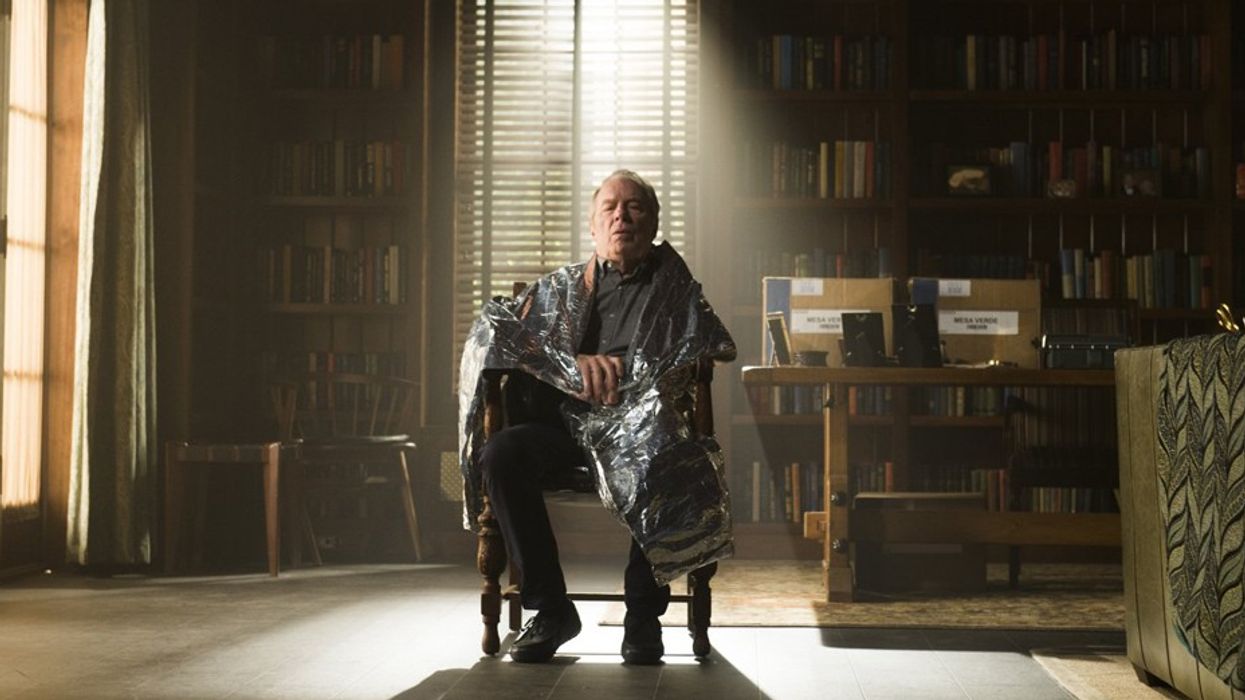How 'Better Call Saul' Editor Kelley Dixon Builds A Scene
'It’s like playing chess with yourself. To do it effectively is to play both sides the exact same way.'

Like many of those who’ve worked their way through the post-production ranks, Kelley Dixon paid her dues as an assistant editor—on Quentin Tarantino’s Reservoir Dogs, Gus Van Sant’s Good Will Hunting and on TV series Huff, Revelations, Without a Trace, and Vince Gilligan’s famed Breaking Bad, before sliding over to the Saul Goodman spin-off, AMC's Better Call Saul.
She has developed her style through these impressive gigs. “I’m not an editor who edits by number,” she told No Film School in a phone interview. “Instead of taking eight frames here or a little bit there, I am one of those who wants to understand the characters, and I put myself into their position. It’s about a particular feeling. I’m editing from my heart.”
If you haven’t watched her latest series, it follows Saul, aka Jimmy McGill’s (Bob Odenkirk) life before meeting Walter White in Breaking Bad. As a somewhat sleazy, flamboyant criminal lawyer, despite appearances, he’s exceedingly competent at his job. His co-worker Kim (Rhea Seehorn) is also his love interest and he's constantly at wits with his brother Chuck (Michael McKean), who’s a highly-respected lawyer himself.

“Saul is a very different show from Breaking Bad. It deals more with the vulnerability of characters than their extremes,” mentions Dixon. “With Walter White, we thought we knew him fairly well. We thought we understood what made him do what he did. From the opening of the show the stakes are really high for Walter, and he makes a decision that sends his life into a tailspin. With Jimmy, you thought you knew him, but now that we’re in this prequel, we find out there’s way more to the guy. We get to see what decisions he made along his path to get him to where we believe he is in Breaking Bad. It gets to people’s sensibilities. I don’t know what will tip him off, but you know he will "break bad" in his own way and that’s what’s really exciting about the exploration of this character. I can’t think of another show that has done this sort of work.”
While both Gilligan shows are character studies, Saul moves at a slower pace than the chemical romance of Breaking Bad. When the dailies start coming in, Dixon watches them in multi-cam mode since there’s a plethora of scenes and setups. She’ll also look for a second way to into a scene to keep the material fresh.
“When I read the script, I have to look at it from the beginning, middle and end. Whether you agree with the motivations of Jimmy, Chuck or not, I need to understand what those motivations are and understand their vulnerabilities. I have to look at the material from the character’s point of view and really strive to understand why they’re treating the other person with disdain, love or whatever emotion,” says Dixon.

“It’s a scene where Kim is being told info and she has to make a very important choice,” says the editor. “Chuck has motivation to expose the truth to Kim and let Jimmy know he’s isn’t being played. Jimmy is taking the stance that there’s no way Chuck could have guessed what he’s done. While Kim is looking at this and saying, 'This guy probably has it right but what am I doing to do with this information?'”
All three characters have an agenda, and they’re all approaching the material it in very different ways. “It’s a really interesting sequence that’s sort of the crutch of the episode. Whatever Kim decides could compromise her personal ethics,” says Dixon. “Chris did an excellent job cutting that scene. We discussed it a lot. We talked about everyone’s motivation. What everybody’s agenda was and all the subtext involved. It’s really about three different people’s point of view and how to show it.”
To build those types of scenes, Dixon realizes that arguments between Jimmy and Chuck are very emotional. “I have to understand what’s important to them and what each character loves, and sort through it all to get the best performance,” explains Dixon. “I’m not trying to pick a side in the fight. It’s like playing chess with yourself. To do it effectively is to play both sides the exact same way.”
A piece of advice Dixon has remembered through the years comes from one of her mentors. “You have to love your characters. That’s the only way you’re going to get the best performance out of them. It’s something I’ve always remembered. When I first heard it, I didn’t understand what that meant. But now that I’ve been editing for a while I understand it much more.”













